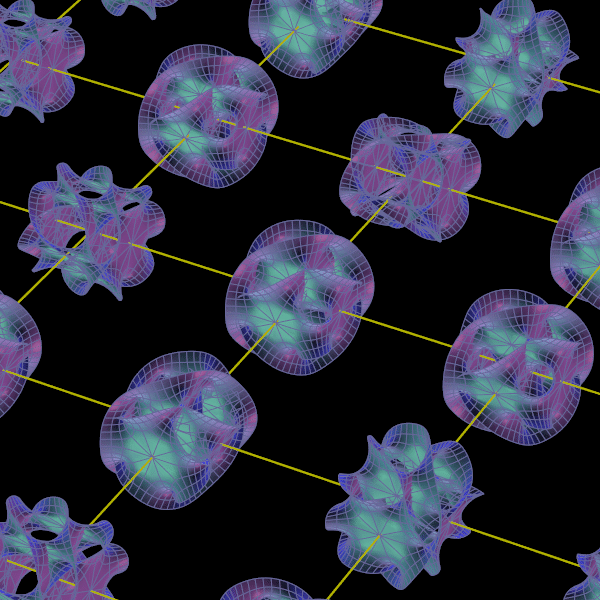 Portraits of circus sideshow performers, by Matt Hoyle:
Portraits of circus sideshow performers, by Matt Hoyle:http://www.matthoyle.com/#/PORTFOLIO/BARNUMVILLE/
Above, The Mysterious Clawman.
 Portraits of circus sideshow performers, by Matt Hoyle:
Portraits of circus sideshow performers, by Matt Hoyle: If you've ever felt compassion when you walked past the lobster tank in the supermarket, there's good reason. From Discovery.com:
If you've ever felt compassion when you walked past the lobster tank in the supermarket, there's good reason. From Discovery.com:Ripping the legs off live crabs and crowding lobsters into seafood market tanks are just two of the many practices that may warrant reassessment, given two new studies that indicate crustaceans feel pain and stress.The findings add to a growing body of evidence that virtually all animals, including fish, shellfish and insects, can suffer.
 There's an interesting profile of LA writer Raymond Chandler in the LA Weekly. I guess it's been 50 years since he died.
There's an interesting profile of LA writer Raymond Chandler in the LA Weekly. I guess it's been 50 years since he died.It’s hard to appreciate just how radical The Big Sleep seemed when it came out in 1939, how it disturbed critics with its portrayal of a world peopled by “moral defectives” (as one reviewer said), how it was a “study in depravity” (according to another), a story populated by pornographers and homosexual blackmailers, mobsters, corrupt cops and rich girls who posed nude in exchange for drugs, bad-seed daughters who killed for vengeful sport and gangsters who controlled politicians. The novel depicted a rapacious midcentury America, where getting and spending, hawking and hustling, corruption and greed and all the rotten little secrets beneath the brash, rude surface of the city signified the death of the Victorian-beau ideal. It’s important to remember that Chandler was as much an English-Victorian writer as a California-American one.
Among the things he liked about L.A. were cars. He loved to drive, loved the freedom encapsulated in the very word automobile. His big green Packard convertible was perfect for migrating to Big Bear for the summers and Palm Springs for the winter. Maybe it was why he moved more than three-dozen times in and around L.A. With an automobile, Chandler could. He embraced the new world of transience and mobility the way a duck takes to migrating, as if it were part of his genes. He liked screenwriters better than novelists: He felt they were more fun and less pretentious. Hollywood eventually beat him down, but he also had some good times when he worked there in the ’40s.
Chandler didn’t create a feel-good world in his books. He gave you permission to feel unhappy about the society you found yourself in. He witnessed the advent of television and mass advertising: Television had possibilities, he felt, though it bred such passivity that watching it was like being mired in the primeval ooze, while advertising was an elaborate scam, a waste of human intelligence, a conning of the public, an inherently dishonest activity guaranteed to make him hate any product being hawked. He didn’t much like the new post–World War II consumer culture either, or the fact that the all-tile bathroom had become the new standard of civilization. He particularly hated the idea of built-in obsolescence — a phrase, regrettably, that’s hardly even uttered anymore.
Toward the end of his life Chandler said, “The story of our time isn’t the story of war or the atomic bomb. It’s the story of an idealist married to a gangster and how their children and home life turn out.” He could be describing The Sopranos.
 Yesterday was my brother Sol's birthday, so what better time to post this picture of him from the 3rd or 4th grade? It must be a big brother thing, but it's funny how he still looks just like this when I see him in my dreams. Minus the paisley shirt of course. Now I'm looking for a good picture of my niece C.C. to post. It was her birthday on the 21st. Happy birthday you guys!
Yesterday was my brother Sol's birthday, so what better time to post this picture of him from the 3rd or 4th grade? It must be a big brother thing, but it's funny how he still looks just like this when I see him in my dreams. Minus the paisley shirt of course. Now I'm looking for a good picture of my niece C.C. to post. It was her birthday on the 21st. Happy birthday you guys!
 Today, at the High Park castle, I "lost" Amado for 5 to 10 minutes. And it seemed like much longer than that.
Today, at the High Park castle, I "lost" Amado for 5 to 10 minutes. And it seemed like much longer than that. The superstring theory of the universe postulates that in addition to the four dimensions of space-time (up-down, left-right, back-forth, plus time), there must be seven additional dimensions which have different characteristics than the four we are familiar with. Together, these 11 dimensions form a reality plane in the shape of a Calabi-Yau space (depicted above). Some of these dimensions may be time dimensions as well as spatial.
The superstring theory of the universe postulates that in addition to the four dimensions of space-time (up-down, left-right, back-forth, plus time), there must be seven additional dimensions which have different characteristics than the four we are familiar with. Together, these 11 dimensions form a reality plane in the shape of a Calabi-Yau space (depicted above). Some of these dimensions may be time dimensions as well as spatial.
The way in which we can find our own place is to tune our instrument to the keynote of the chord to which we belong. Sound is the force which groups all things, from atoms to worlds. The chording vibration sounds in the innermost being of ourselves and can only be heard in silence. When we go into the inner chamber and shut the door to every sound that comes from the life without, then will the voice of God speak to our soul and we will know the keynote of our life.
--Hazrat Inayat Khan (1882-1927), The Music of Life
 Now reading: The Elegant Universe: Superstrings, Hidden Dimensions, and the Quest for the Ultimate Theory, by Brian Greene. This book is more mind-expanding than any psychedelic drug.
Now reading: The Elegant Universe: Superstrings, Hidden Dimensions, and the Quest for the Ultimate Theory, by Brian Greene. This book is more mind-expanding than any psychedelic drug.According to string theory, the universe is made up of tiny strings whose resonant patterns of vibration are the microscopic origin of particle masses and force changes. String theory also requires extra space dimensions that must be curled up to a very small size to be consistent with our never having seen them. But a tiny string can probe a tiny space. As a string moves about, oscillating as it travels, the geometrical form of the extra dimensions plays a critical role in determining resonant patterns of vibration. Because the patterns of string vibrations appear to us as the masses and charges of elemental particles, we conclude that these fundamental properties of the universe are determined, in large measure, by the geometrical size and shape of the extra dimensions. That's one of the most far-reaching insights of string theory.
 My Mom has a brilliant poem published in the latest issue of the literary journal, Persimmon Tree. I've reproduced the poem below, but please visit Persimmon Tree and read all the great writing there! http://www.persimmontree.org/
My Mom has a brilliant poem published in the latest issue of the literary journal, Persimmon Tree. I've reproduced the poem below, but please visit Persimmon Tree and read all the great writing there! http://www.persimmontree.org/ Cooper Gallegos's family had a one-room adobe house in a small Mexican village where she spent summers as a kid. Her poem, “Cornstalks and Crows,” is written from a memory of that time. She has been published in Looking Back; What It's Like to Love a Woman; Sisters Singing; and she has read her work on Central Coast Public Radio. She is currently writing a collection of inter-linked stories set in the 1970's Mojave Desert. When not writing she makes “found art” from rusted metal she scavenges from the middle of nowhere.
Cooper Gallegos's family had a one-room adobe house in a small Mexican village where she spent summers as a kid. Her poem, “Cornstalks and Crows,” is written from a memory of that time. She has been published in Looking Back; What It's Like to Love a Woman; Sisters Singing; and she has read her work on Central Coast Public Radio. She is currently writing a collection of inter-linked stories set in the 1970's Mojave Desert. When not writing she makes “found art” from rusted metal she scavenges from the middle of nowhere. When the Mexican artist Frida Kahlo was a child, she used to fog a mirror with her breath and draw a doorway in the steam with her finger. Then she would stare at the doorway until she imagined herself going through it and travelling across a great plain until she came upon a dairy called "Pinzon." She would then enter a portal through the "o" in "Pinzon" sign and pass through it deep to the centre of the earth. There, she would meet with her imaginary friend, a little girl who was joyous and filled with life.
When the Mexican artist Frida Kahlo was a child, she used to fog a mirror with her breath and draw a doorway in the steam with her finger. Then she would stare at the doorway until she imagined herself going through it and travelling across a great plain until she came upon a dairy called "Pinzon." She would then enter a portal through the "o" in "Pinzon" sign and pass through it deep to the centre of the earth. There, she would meet with her imaginary friend, a little girl who was joyous and filled with life.